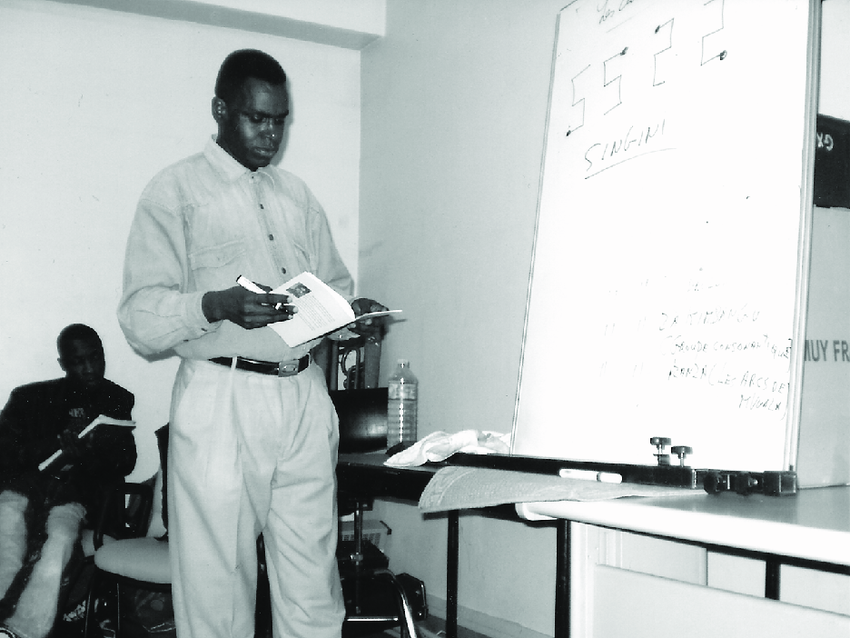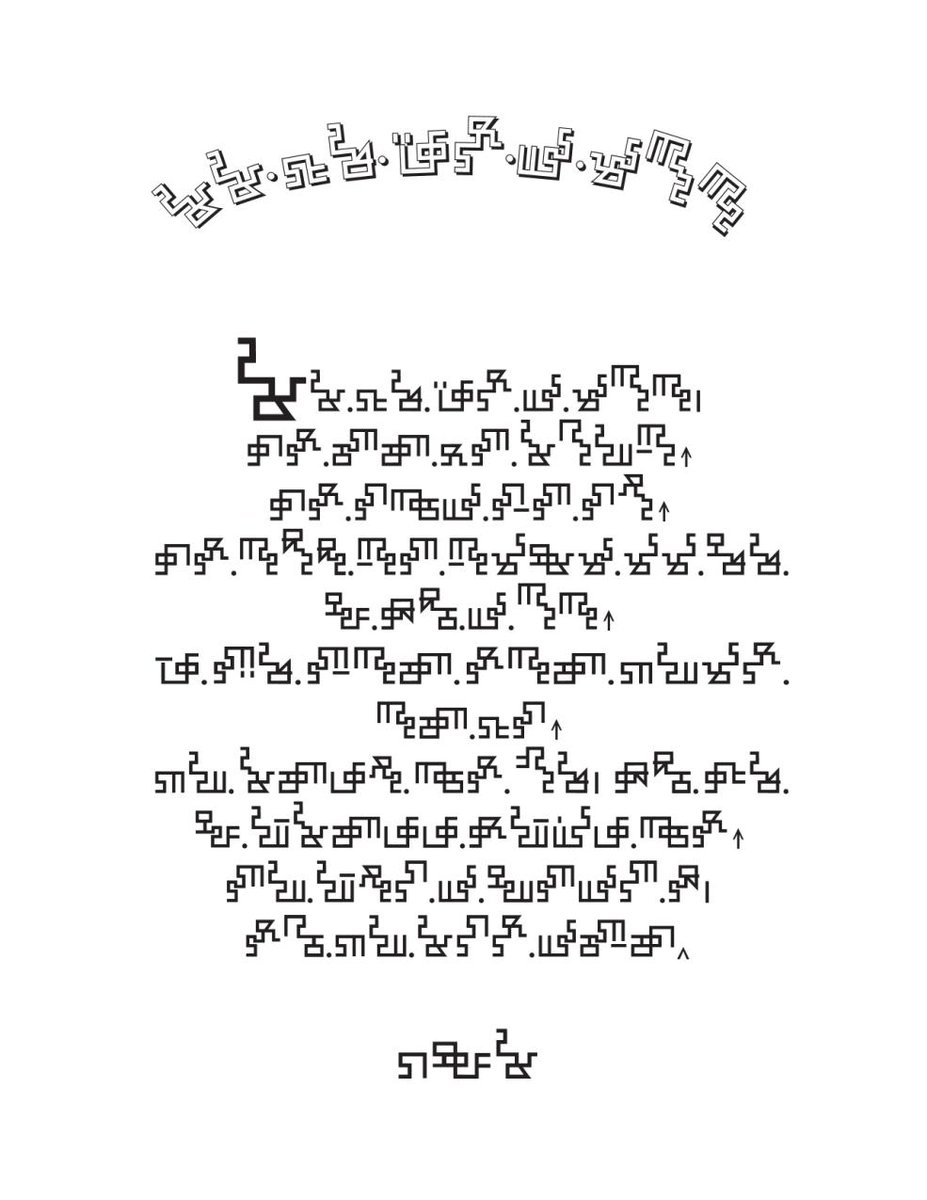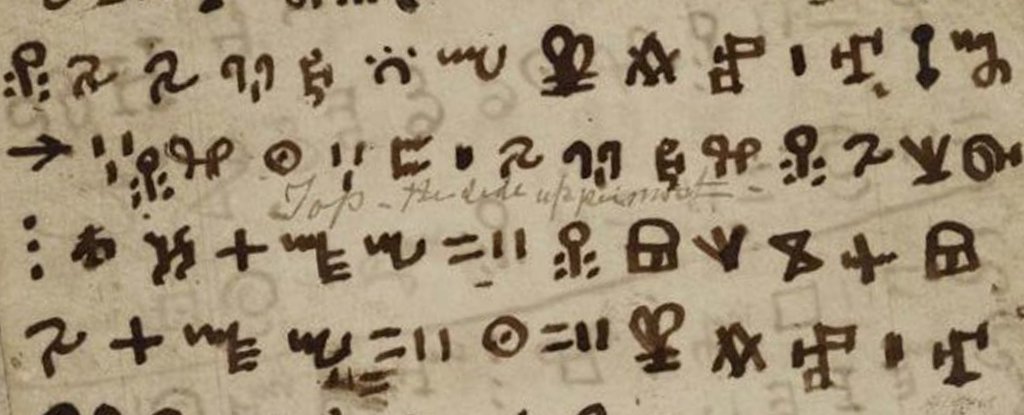Mandombe: A spiritual and cultural heritage of the kimbanguists, used to write Kikongo, Lingala, and more
In 1978, in the small town of Mbanza-Ngungu, located in the Bas-Congo province of the Democratic Republic of Congo, an extraordinary event took place. Wabeladio Payi, a young man deeply rooted in his Kimbanguist faith, received a vision that would make history in African languages. This vision, which he attributed to Simon Kimbangu, the prophet of the Kimbanguist Church, was not just a religious revelation: it was an invitation to create a new writing system. This script, which he named Mandombe, quickly became a symbol of African cultural and linguistic resilience.
Origins of the Mandombe script, a spiritual revelation

Mandombe is not just a writing system; it is a living manifestation of African spirituality and culture. Wabeladio Payi recounts that this script was revealed to him in a dream, where he saw the sacred shapes of the numbers 5 and 2 transform into letters. These forms, far from being arbitrary, hold deep significance in Kimbanguist cosmology. The number 5 symbolizes humanity, and the number 2, representing union, signifies the inseparable link between humanity and the divine.
The creation of Mandombe addresses a pressing need: to provide a writing tool adapted to African languages, long marginalized by writing systems imported from the West. The script is designed to write Kikongo, Lingala, Tshiluba, and Swahili, which are the main national languages of the DRC. Through Mandombe, Payi aimed not only to preserve these languages but also to elevate them by offering a unique alphabet rooted in African traditions.
Structure and functioning of Mandombe, sacred geometry

Mandombe is distinguished by its unique geometric structure. Based on the shapes of the number 5, which transforms into a stylized square, this script is both simple and complex. Letters are formed by adding strokes or altering the orientation of this basic shape, creating a variety of consonants and vowels. This system allows great flexibility in the composition of syllables, essential for the tonal and agglutinative languages of Central Africa.
The script is divided into four groups of consonants, each being a variation of the basic square, and each group is subdivided into four families based on the orientation of the letter. This structure reflects an internal logic that, while different from Latin or Arabic alphabets, remains intuitive for those who master basic geometric concepts.
Vowels, on the other hand, are represented by numerical additions to the basic square, giving them an almost mathematical dimension. This approach, both innovative and deeply rooted in African symbolism, allows for capturing the phonetic nuances of African languages, though some limitations remain, particularly for Lingala, due to the insufficient number of available vowels.
Mandombe does not merely represent sounds; it also incorporates elements of African visual culture. For example, the use of diacritics for diphthongs and vocalic sequences recalls artistic patterns found in African textiles and art. Additionally, the geometric transformations of the letters evoke dance movements, making Mandombe not only a linguistic tool but also an expression of African cultural aesthetics and dynamics.
Mandombe, an instrument of cultural and educational resilience

Since its creation, Mandombe has been promoted by the Kimbanguist Church, which has made it a cornerstone of its religious and cultural education. In Kimbanguist schools in Angola, the Republic of Congo, and the DRC, children learn not only to read and write in Mandombe but also to understand the spiritual depth of this script. It is not just a writing system, but a tool for cultural and identity reclamation for African populations.
The Center for Negro-African Writing (CENA), founded by the Kimbanguist Church, plays a central role in the dissemination of Mandombe. This center actively works to transcribe other African languages into this script, hoping to extend its use beyond Kimbanguist communities. The vision is ambitious: to make Mandombe a pan-African script capable of resisting the homogenizing pressures of Latin and Arabic alphabets.
However, despite these efforts, Mandombe has not yet been officially recognized by the states where it is taught. It remains a “semi-official” script, used primarily in specific religious and educational contexts. The challenges are numerous: training teachers, producing educational materials, and, most importantly, integrating Mandombe into national educational systems.
Mandombe compared to other african scripts, a viability to prove

Mandombe is often compared to other indigenous African scripts such as the Vai syllabary of Liberia and the N’Ko alphabet used by the Manding peoples of West Africa. Although these three writing systems are recognized for their originality and cultural significance, each faces specific challenges in terms of viability and sustainability.
Vai and N’Ko enjoy broader recognition, with more widespread use and a presence in the digital realm thanks to their integration into Unicode. Mandombe, on the other hand, is still awaiting similar recognition, although a proposal for its inclusion in Unicode has been submitted. This inclusion in the Unicode system could be a turning point for Mandombe, allowing it to expand beyond the borders of Congo and reach a wider audience in the digital world.
The future of Mandombe will depend on several factors: the ability to train a new generation of speakers and writers, official recognition by African states, and dissemination through new technologies. The challenge is significant, but the history of Mandombe shows that this script holds immense potential for the revitalization of African languages and cultures.
Mandombe, a symbol of resistance and renewal

Mandombe is more than just a writing system: it is a living testimony to the capacity of African peoples to create, innovate, and resist. In a world where African languages and cultures are often marginalized, Mandombe offers a way for their preservation and enhancement. As new generations of Africans discover and adopt this script, it is essential to support initiatives aimed at promoting it.
The story of Mandombe is one of cultural resistance, but also of renewal. It embodies the possibility of a future where African languages will not only be spoken but also written and read with pride, in a script that is their own, rooted in the spiritual and cultural traditions of the continent.
